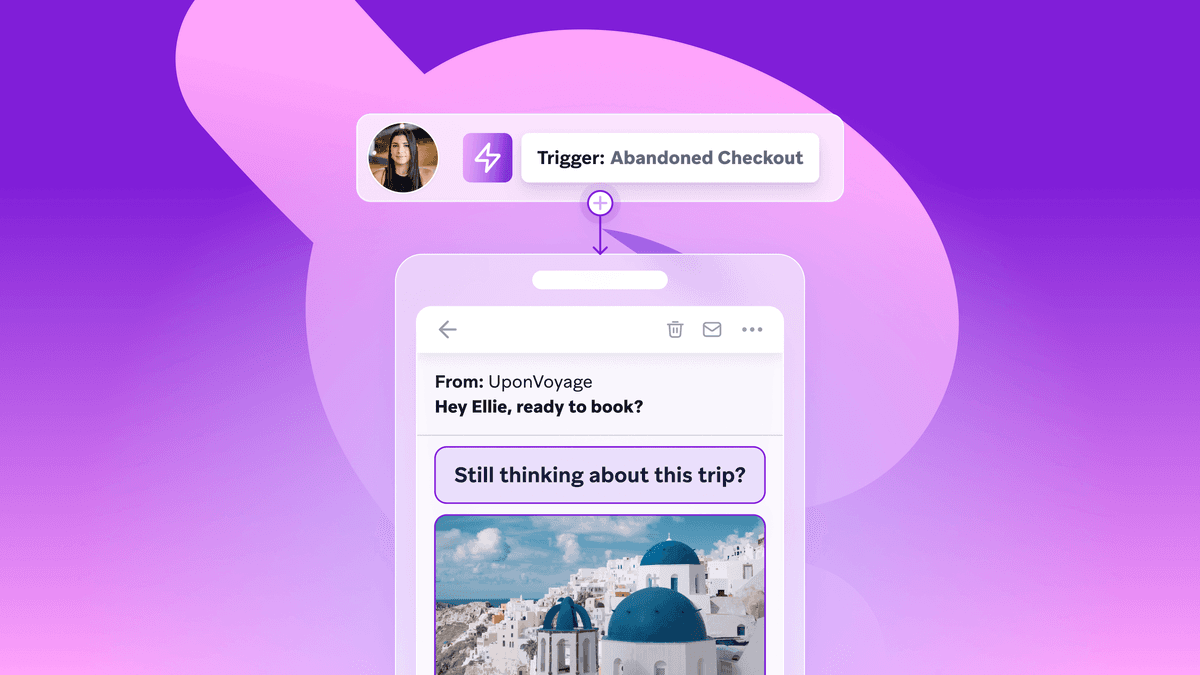Why Google’s Retreat on Cookie Deprecation Won’t Slow the Shift to a First-Party Future
Published on July 25, 2024/Last edited on July 25, 2024/11 min read


Todd Grennan
Managing Editor, Content Marketing at BrazeThis week, Google made an announcement that took much of the marketing world by surprise. More than four years after announcing that it would move to deprecate third-party cookies within its globally dominant Chrome web browser, the company said that it was considering backtracking on that commitment and instead taking steps to give users more control over whether they could be tracked by advertisers.
This news, shared in a blog post on the website of Google’s Privacy Sandbox initiative, didn’t definitively rule out deprecating cookies in the future. However, it said that the potential shift had come about after the company “received feedback from a wide variety of stakeholders, including regulators like the UK’s Competition and Markets Authority (CMA) and Information Commissioner's Office (ICO), publishers, web developers and standards groups, civil society, and participants in the advertising industry.”
This, to put it lightly, is a big change of heart. Since Google’s 2020 announcement, companies around the world have had to rethink their data strategy, with many brands choosing to re-center their marketing efforts around first-party data instead. But while this about-face could mean that some third-party cookies stick around, the dynamics driving the shift to first-party data haven’t fundamentally changed. Accordingly, brands who follow through on this key transformation are setting themselves up for future success.
To understand why that is and what the likely impact of Google announcement will be when it comes to customer engagement, read on:
The deprecation (and un-deprecation) of third-party cookies: How did we get here?
From the early days of the internet, third-party cookies have been central to the way most digital marketers understood their users. These trackers let companies use customer data they hadn’t collected themselves to help understand each individual’s browsing behavior and preferences, enabling insights and ad targeting that might have been impossible otherwise. Cookies thrived in an era where the average person—and regulators, too, for that matter—didn’t think much about what data companies were collecting and what, exactly, they were doing with it.
But over the last decade, the status quo around data privacy began to shift in a major way. This change was driven in part by major scandals like Cambridge Analytica and compounded by the passage of landmark privacy regulations like the EU’s GDPR and the California Consumer Privacy Act (CCPA). Tech giants responded by turning their attention to privacy, with both Apple and Firefox introducing significant updates that limited third-party cookie tracking in connection with their digital platforms. In 2020, Google followed suit, announcing that they would “phase out support for third-party cookies in Chrome” within two years.
The world, it seemed, had changed. Marketers began to realize that consumer discomfort with data being collected and used without consent mattered. Some brands panicked or embraced denial, but forward-looking ones took another path. They embraced first-party data and began to re-engineer their approach to customer data collection to put consumer consent and preferences first.
Meanwhile, Google started dragging their feet. They’d planned to introduce a proprietary replacement for third-party cookies, first via the concept of Federated Learning of Cohorts (FLoC) and later via a Topics API. However, advertiser skepticism of the Google Privacy Sandbox and scrutiny from regulators—who saw Google’s exclusive access to user interest tracking in Chrome as a potential anti-competitive issue—slowed adoption. Google responded by delaying, pushing back the deadline three different times, most recently announcing that the deprecation of third-party cookies in Chrome would occur at the end of 2025.
Then this week, that delay began to look like it might be permanent. In the company’s announcement on July 22, Google said: “We are proposing an updated approach that elevates user choice. Instead of deprecating third-party cookies, we would introduce a new experience in Chrome that lets people make an informed choice that applies across their web browsing, and they’d be able to adjust that choice at any time.” However, the company didn’t definitively commit to this course of action, saying only that they were considering it and would discuss the approach with regulators before implementing it.
Google’s announcement: The implications for marketers
While the death of the third-party cookie in Chrome is looking less likely, at least in the short-term, the reality is that this announcement doesn’t reshape the fundamental dynamics at play when it comes to the use of third-party data by marketers.
While Google’s position may have shifted, there’s no sign that this change reflects a larger change of heart in the space. Apple and other tech brands are moving away from secretive third-party data collection practices, and regulators in the EU and beyond are likely to continue making it harder for brands to use third-party data to support their marketing efforts over time.
Similarly, consumers don’t want to be tracked without permission. And, in the US, at least, when individuals are given the choice to accept cookies or not, most choose to opt out. After Apple gave consumers a similar choice in connection with the introduction of its AppTrackingTransparency (ATT) framework, only about a quarter of users agreed to let third-parties track their data, significantly limiting the reach of advertisers through traditional methods. So if Google really does move forward with a strategy that foregrounds empowering consumers to choose if they want to be tracked, we may find ourselves in a world where third-party cookies slowly disappear—without ever being officially deprecated.
Initiatives like Google's Privacy Sandbox are part of an effort to find ways to deliver personalized consumer experiences, while still upholding consumer privacy. And for that reason, it’s likely that it will have a role to play in supporting digital advertising efforts in the medium-term. Anything that helps brands maintain their ability to deliver targeted advertising and performance measurement while moving away from invasive tracking is a positive in today's landscape. However, given the larger regulatory and market forces that are driving the move toward first-party data and consumer choice, it's yet to be seen if this particular approach takes off. And even if it does, it’s an open question whether it will remain essential for marketers in a world where first-party data has become the default for targeting.
So if your marketing efforts are still dependent on third-party cookies, don’t be lulled into a false sense of security by this announcement. Google is giving you a bit more breathing room, but the smart move remains the same: Namely, transitioning away from a sole focus on third-party data, and building out a robust first-party data strategy. That doesn’t necessarily mean refusing to use any third-party data under any circumstances, but it does mean shifting the center of gravity of your data approach to something more sustainable and impactful.
How brands can build an effective and first-party data strategy
Change can be scary. For marketers who have relied heavily on advertising cookies and other third-party data as a foundational part of their advertising and customer engagement efforts, the idea of successfully engaging and retaining users without them can feel overwhelming or even impossible. But if you take this transition one step at a time and make sure you have the tools and tactics you need, you may find that the shift actually leads to better outcomes for your business.
Not sold? Ask Google. Research they conducted with Boston Consulting Group found that first-party data is actually more impactful, with digitally mature brands who used first-party data for key marketing functions seeing up to a 2.9X revenue uplift and a 1.5X increase in cost savings.
On a high-level there are three key things you should prioritize in order to support the success of your first-party data strategy:
1. Implement technologies that allow you to unify, activate, and distribute first-party data
Because it’s collected directly from consumers as they share preferences and take key actions, first-party data tends to be more accurate and relevant than third-party data. That’s powerful, but only if you have the tools you need to make effective use of it. Make sure that the technologies at your disposal allow you to collect, unify, activate, distribute, and take action on the first-party data at your disposal.
What does that look like in practice? Consider Braze. The Braze solution’s SDKs and APIs make it possible for marketers to gather real-time, actionable information on what their customers care about and what products or features they’re engaging with, both on owned platforms like mobile apps or websites as well as by drawing on data from proprietary systems, including POS solutions. The Braze Data Platform, part of the overall Braze solution, amplifies those capabilities by supporting direct, ongoing connections with leading data warehouses, digital properties, and companies’ own proprietary systems, unlocking the full spectrum of first-party data to gain deeper insights and power personalized, responsive messages and digital experiences across channels.
2. Tie together paid and owned channels to support a more relevant, cohesive experience
One side effect of the advertising business’ long-time reliance on third-party cookies? Organizational and data silos that separated the paid side of many companies’ marketing efforts from the customer engagement work being done on owned channels like email, push notifications, or SMS. These silos aren’t just inconvenient for marketers—they can drive up costs, hamper results, and negatively affect the overall customer experience.
Moving toward a focus on first-party data creates an opportunity to break down these silos and connect the two sides of your marketing program in a seamless way that supports a cohesive experience for your users. The Braze platform’s Audience Sync feature is built to support this approach, allowing marketers to easily use first-party data within Braze to dynamically target, trigger, or suppress paid ads across Criteo, Facebook, Google, Pinterest, Snapchat, and TikTok. And because this feature links Braze with these ad platforms, brands can build out responsive flows where advertisement and customer messages work in concert, keeping the conversation going with customers in coherent ways and giving marketers opportunities to re-engage lapsed users and reduce ad spend by suppressing ads for users who have already taken key steps like making a purchase.
What does that look like in practice?
- Australia’s National Basketball League used Audience Sync to create more targeted and relevant ad sets by combining first-party customer data in Braze with interests native to Meta Ads Manager, boosting sales.
- Fitness and wellness subscription service ClassPass leveraged Audience Sync to dynamically refine audience targeting, using real-time customer behavior and first-party data, for paid ads on Facebook, Google, and TikTok, increasing related conversions.
3. Gather voluntary data directly from your customers
Even many brands that have made the move to a first-party data strategy are missing out on a key opportunity when it comes to customer-generated data: Namely, gathering data that customers choose to share directly with brands in response to surveys and other prompts created by marketers. This type of data gives users the ability to have a say in their own customer experience, and makes it possible for marketers to further refine the experiences they’re providing based on each individual’s statement preferences.
Not sure how to get started? Consider using these customer engagement tools to begin the data collection process:
- In-app or in-browser message surveys: Braze makes it easy to build surveys directly into your in-product messages, allowing you to surface key questions and gather response data from any user who visits your mobile app or web page, respectively.
- Landing pages: Take advantage of web landing pages and their support for built-in forms to provide your customers with tailored experiences on the web that connect with your customer messaging and allow you to directly collect relevant information that can support stronger messaging over time.
Final thoughts
While Google’s announcement introduces new ambiguities around the short-term future of third-party cookies in Chrome, the long-term picture is clear: Consumers and marketers alike will continue to move away from cookies, making thoughtful, first-party data approaches essential for brands as they look to stay competitive in the coming years.
Interested in learning more about first-party data and how it can support your customer engagement efforts? Check out A Complete Guide to First-Party Data.
Ready to deepen your understanding of the Braze Data Platform and the role it can play in unlocking the power of first-party data in connection with your customer engagement efforts? Check out our blog post on the Braze Data Platform and its capabilities.
Related Tags
Be Absolutely Engaging.™
Sign up for regular updates from Braze.
Related Content
View the Blog
The power of mobile app automation: Benefits, use cases, and best practices

Team Braze

Customer onboarding automation: Benefits, strategies, and best practices

Team Braze

Moving beyond demographics to true understanding: Key insights from Grow with Braze Seoul 2025
